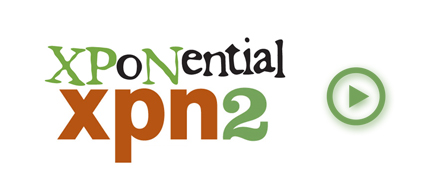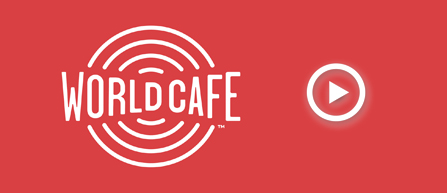Tiersen began recording in the summer of 1993, putting together much of the material for his first two albums. Tiersen first found commercial success in his native France with 1998’s Le Phare, recorded in 2 months on the island of Ouessant. His overseas popularity only truly took off with the release of director Jean-Pierre Juenet’s 2001 film Amelie. Tiersen provided both work from his previous albums and original compositions for the film’s score.
Yann Thiersen’s latest studio album, Skyline, was released on April 6, 2012 on the ANTI- record label, but has been available since October in Europe. Skyline, Thiersen’s seventh album, comes about a year after October 2010’s Dust Lane. This latest effort breaks with some of the more recognizable elements of Thiersen’s earlier works, but is still a characteristic exploration of the emotional resonance of unshackled sound. On today’s episode of World Café Live, Yann Tiersen discusses the risks he faces as a musician in linking his music to visual art and imagery in contrast to the importance that such associations can have for the listener. Tiersen also talks about his heritage from the Brittany region of France and his exclusive use of English lyrics.
Website: http://www.yanntiersen.com/
Facebook: http://www.facebook.com/yanntiersen.official
Set List:
MONUMENTS
THE GUTTER
THE TRIAL
Recent Release: Skyline
Release Date: April 6, 2012
Label: ANTI-
Band Origin: Brittany, France
NOTES:
From Artist Website - About Yann Tiersen
Yann has been honing his musical aesthetic since he could stand on two legs. Born in 1970 in Brest, Brittany, on the western edge of continental Europe, he started learning piano at the age of four, taking up violin at the age of six and receiving classical training at musical academies in Rennes, Nantes and Boulogne. Then, at the age of 13, he chose to alter his destiny, breaking his violin into pieces, buying a guitar and forming a rock band.
Yann got a musical education from the city’s annual Transmusicales festival, seeing acts like Nirvana, Einstürzende Neubaten, Nick Cave and The Bad Seeds, The Cramps, Television and Suicide. When his band broke up a few years later, instead of hunting for some new musicians, he bought a cheap mixing desk, an eight-track reel, and started recording music solo with a synth, sampler and drum machine, poring over the grooves of old records on the hunt for loops and orchestral strings to plunder.
As it turned out, though, the key to his new approach lay in his own past. “One day I thought, instead of spending days on research and listening to tons of records to find the nearest sound of what I have in mind, why don’t I fix this f_____g violin and use it?” Through the summer of 1993, Yann stayed in his apartment, recording music alone with guitar, violin and accordion, guided not by the classical canon, but by intuition and his vision of “a musical anarchy”.
“Let’s live in an enormous world of sound we can use randomly, with no rules at all,” says Yann, of his vision. “Let’s play with sound, forget all knowledge and instrumental skills, and just use instinct – the same way punk did.”
By the end of the summer of 1993, Yann had recorded over 40 tracks, which would form the bulk of his first two albums. 1995's La Valse Des Monstres, inspired by Tod Browning’s Freaks and Yukio Mishima’s The Damask Drum was the second album to be released on Nancy-based label Ici, d’ailleurs. It would be followed six months later by Rue Des Cascades, a collection of short pieces recorded with toy piano, harpsichord, violin, accordion and mandolin. Six years later, the record would find a much larger audience when several tracks, along with a couple of Yann originals, would be used on the soundtrack to Jean-Pierre Jeunet’s film Amelie (2001).
Yann’s commercial breakthrough would come earlier, though, and off his own back. 1998's Le Phare (The Light House) was recorded in self-imposed seclusion on the isle of Ouessant, where Yann spent two months living in a rented house. At night, he watched the Creach’h, the most powerful lighthouse in Europe, as it illuminated the surrounding scenery. “I was amazed how the rays of lights from the lighthouse revealed some hidden details of the land, how we can rediscover something we have everyday, just in front of us, by a light pointing on it,” says Yann.
Le Phare went on to sell over 160,000 copies, confirming Yann’s status as one of the most pioneering and original artists of his generation and commencing a run of successful albums like 2001's L’Absente (featuring orchestral group Synaxis, Lisa Germano and the Divine Comedy’s Neil Hannon) and 2005's Les Retrouvailles (with guests Stuart Staples of Tindersticks, Jane Birkin and Elizabeth Fraser of Cocteau Twins). In this period, Yann also took his music out around the world, playing shows with a full orchestra and an amplified string quartet – a set-up captured on 2002's electrifying live album C’etait ici. And following the box-office success of Amelie, Yann’s skills as a soundtracker were much in demand, leading to scores for the likes of Wolfgang Becker’s tragicomedy Good Bye Lenin! (2003) and Tabarly (2008), a documentary about the French sailor Éric Tabarly, who ate his final meal on Ouessant Island before he meeting a watery end in the Irish sea.
ADDITIONAL INFO:
Yann Tiersen is French musician and multi-instrumentalist. He studied piano and violin in local conservatories as a child, but rebelled against classical music - symbolically breaking his violin into pieces - to play with post-punk bands as a teenager. In the beginning of his career he was a part of various rock bands before he released his first album, Valse des Monstres, on which he played many varied instruments including toy piano, banjo, harpsichord, melodica, and carillon. Tiersen gained success in 1998 when he released his third album, Le Phare due to the hit single "Monochrome", sung by French pop star Dominique A. He didn't grow in popularity outside of France, however, until French director Jean-Pierre Jeunet asked Tierson to score his film Amelie in 2001. He has a total of thirteen records that alternate between film scores, pop music, and live albums. His most recent record is Skyline, his seventh studio album, which was released in the US on April 6, 2012 on the Anti- label.
IN THIS INTERVIEW:
David mentions Yann is probably most known for the soundtrack to the movie Amelie and says the director of that film used Yann's music to help set images for the camera rather than inserting the music later. However, Yann is not a composer of soundtracks, and David asks if Yann is interested at all in writing music to put against visuals. Yann says that while writing music, it's bad to have a visual translation in mind. But as a listener, it's the opposite; when you listen to music you're free to imagine whatever you want, and as a director, it's easy to link music with images. David asks if Yann has had any classical music training with piano and violin, his first two instruments. Yann says he has not, but he was into music at an early age, and when you learn to play such instruments, you pick up a bit of theory along the way. Yann has a home on an island off the coast of Brittany with a population of 800 people, although there are eight pubs as well. David asks why all of his lyrics are in English. Yann says that he grew up in Brittany, which had a language similar to English for centuries until it was almost killed off by French. It also helps him be understood by a larger audience.
-
font size
decrease font size
 increase font size
increase font size

- Tweet
Yann Tiersen
The sounds of multi-instrumentalist Yann Tiersen are anarchical and break the constraints of form, yet each of his tracks have poignant and emotional melodies. Tiersen quickly abandoned the academy training of his early childhood, smashing his violin and adopting the electric guitar instead.
Tagged under
Copyright © 2025. origin.xpn.org.
Designed by Shape5.com Joomla Templates






